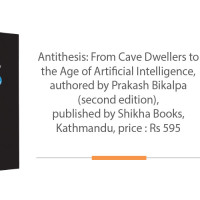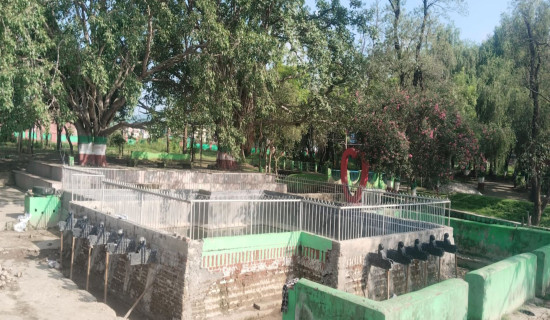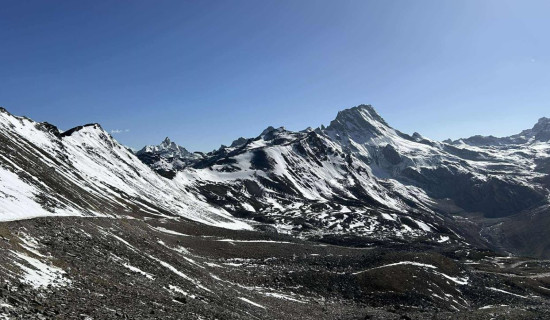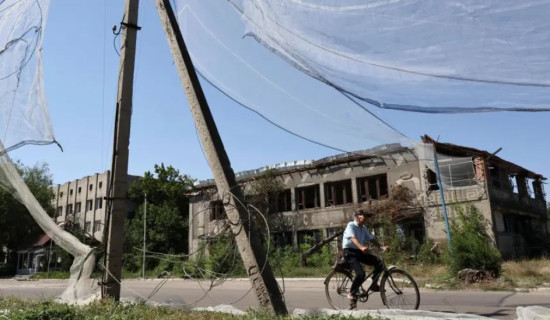- Thursday, 17 July 2025
Let The Facts Speak First
Celebrations of institutional anniversaries generate a meaningful and lasting impact on the quest for improvement in the services organisations render. Public institutions are expected to bear their responsibilities honestly and with professional integrity in addressing their professed target groups. That constitutes a reliable road to reassuring the audience and, with it, earning their loyalty to an information outlet.
In marking its anniversary, the Gorkhapatra Sansthan gets an opportunity to review its services, including the contents of its several publications. This calls for self-evaluation, exercising full-scale critical faculty, with the purpose of yet better service in terms of published material as well as commercial aspects and efficiency in the distribution network.
One of the oldest government-supported news media anywhere in the world, the Gorkhapatra, launched in 1901, stands as Nepal’s first newspaper that began as a weekly in 1901 before progressive increase in its publication frequency until it turned into a daily more than 60 years ago.
Unique history: There is this absurd argument put forth in criticising the existence of government media, citing that democratic countries do not run government papers. So what? Newspaper history in most countries presents the records of the private sector pioneering regular, professional information.
In Nepal’s unique case, Gorkhapatra debuted as its first newspaper, even if more than a half century after the printing press ordered by the first Rana Prime Minister Jung Bahadur in connection with his 1850 official visit to Britain arrived. Several major political changes over subsequent decades notwithstanding, the pioneer paper continues to stand tall among some 200 daily papers spread across the country. So does the corporation’s The Rising Nepal, launched in 1965 as the country’s first English broadsheet daily.
All said and done, content quality and media credibility are what predominantly count. At a time when questions get tossed up frequently concerning the print media’s fate and future, the news media would do well to adapt to changing tastes cultivated by the availability of enormously multiple channels of information and entertainment.
Multiple choices: The vast vistas of quick and readymade content sources, especially since the 2010s, offer a range of choices to suit various individual tastes and institutional needs. With such volumes of media content of varying values accessible at the click of a keyboard, the scope for new avenues of communication and information dissemination keeps being constantly probed, refined and expanded.
Multiple choices in content genres lure people to venture into new options. If satisfied, their migration could last long or they might keep looking for channels other than the traditional media they earlier upheld with considerable gusto.
Major newspapers and magazines in many countries, including media-saturated and economically advanced democracies, continue to hold their reign. Fragmentation of reading, listening and viewing audiences proves to be an unstoppable march. Its challenges to various genres of news outlets are visibly immense.
The thousands of news outlets listed in different categories, too, face stiff competition. Rather than the drive for thriving, the first onerous task concerns surviving in a manner that enables an institution to carve a niche for itself. It needs to pay special attention to specific issues, backed by persistently in-depth stories and investigative reports. These can be unraveled from any news beat—sports, entertainment, environment, health, education, crime, corruption, and misdeeds by bigwigs—provided that inputs like minimum investment as well as unflagging drive and dedication are not lacking.
Distinguished legacy: Gorkhapatra Sansthan’s two dailies and three-monthly magazines each hold enviable distinction in Nepal’s print media landscape. While Gorkhapatra and The Rising Nepal dailies are the oldest and also the first two broadsheet newspapers that continue to be listed in the "A" category by Press Council Nepal, Madhupark literary magazine, youth-focused Yuva Manch and the children’s magazine Muna are all leading periodicals in their respective fields by way of content quality plus circulation, regularity, design and layout.
Why these publications, barring the Gorkhapatra, make do with chronically meagre advertising is a query that needs to be addressed with urgency. After all, they have ruled the roost since their inception, as far as circulation figures are concerned.
Do niche publications denote inherent disadvantages in Nepal? That is not the case in other countries—developed or otherwise—including those in South Asia.
Whereas many private sector news media veer toward combative and often partisan journalism, public service news outlets are expected to exercise restraint in carrying unsubstantiated news. An onerous task is to ensure non-partisan journalism, which can be done by deploying ombudsman services.
Almost all governments, including European democracies, continue to being involved in broadcast media, even if the nomenclature of the funds for the services might seek to avoid the usage of "government funds".
"Public support", "public subscriptions" and the like refer to government support in a round-about manner. Whatever the description, the funding is allocated through state-initiated regulations that make it mandatory for people to pay annual fees for meeting the financial requirements of outlets designated as "public service broadcasting". In effect, whether the audiences tune to the state-backed media or not, they are legally bound to pay the fees. The BBC is one of the most prominent cases in point.
Hence running news by governments should not cause any misgivings or heartburns to their critics. The moot question is whether the state-run media are professional and non-partisan or not.
Public trust issue: A Reuters Institute survey in 2021, covering 92,000 news consumers, indicated that generally only 29 per cent of people surveyed trust news as against 45 per cent in Canada and 54 per cent in Brazil. The data ranked the United States at the bottom of a list of 46 countries in terms of public trust in media. This placed the US at a position worse than Poland in Europe, the Philippines in Asia and Peru in Latin America.
The issue of public trust in news outlets being at such critical juncture even in advanced countries with long history and traditions, the media variables are to be taken into consideration for due assessment.
The five publications of the Gorkhapatra Sansthan, therefore, should be proactive in making periodic and critical self-assessment of their performances. This should be based on free, frank discourse for adapting to the changing times and tastes of news consumers of varied ages and scattered as disparate and unorganised masses.
In journalism—more so, in public service journalism—bare facts won’t work. Timely, relevant and newsworthy information involving different groups of people, places and personalities attract public attention to news contents of print and broadcast variety. It emerges as a platform of public trust.
On the occasion of the Gorkhapatra Sansthan’s flagship stepping into its 123rd year, the editorial departments and management personnel would do well to make a candid appraisal of the state of their publications to enhance the prospects and continued success in the times ahead.
(Former chief editor of The Rising Nepal, P Kharel has been writing continuously for this daily since 1973.)

















